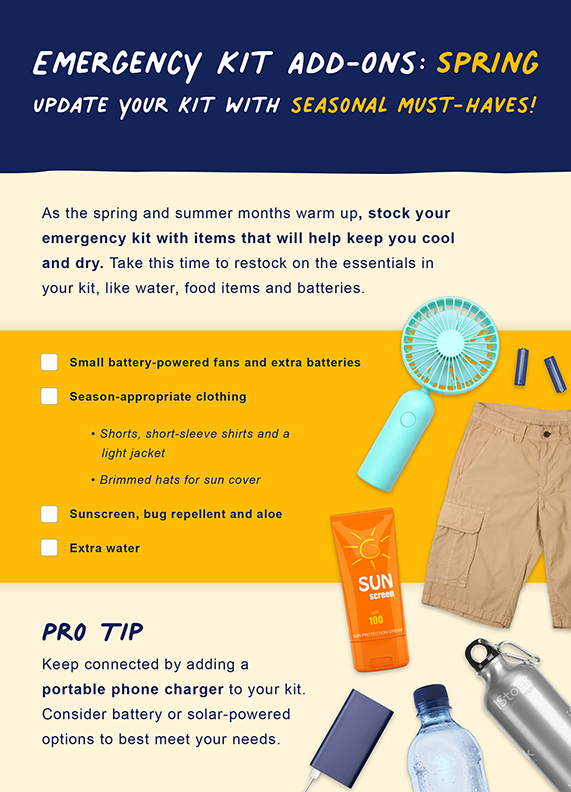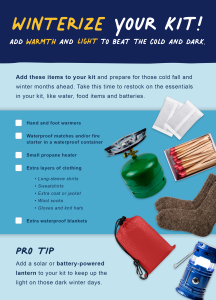
Build a Kit
Build an emergency supply kit with accessible and affordable items in the event of disaster, lost power, unsafe travel conditions or extended shelter-in-place orders. You need supplies ready to safely stay in place until the emergency passes.
Different types of kits:
- Emergency shelter-in-place kit: for an extended stay at home (three or more days).
- Go-bag: for immediate rapid evacuation of the home — a scaled-down version of the emergency shelter-in-place kit.
- Travel kit: for your vehicle or if you are traveling for work or vacation.


